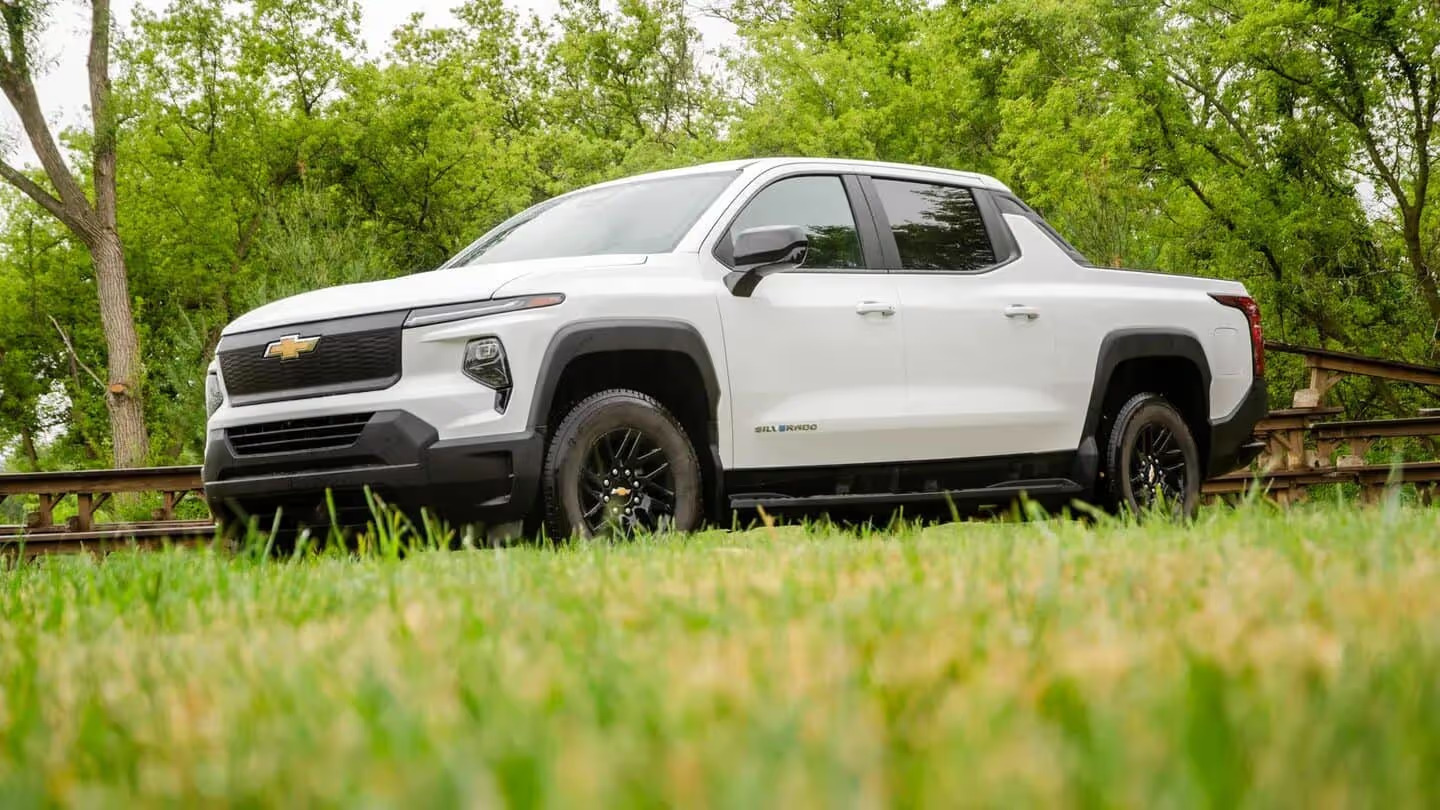In today’s automotive landscape, safety and vehicle monitoring technologies have become increasingly vital, especially for trucks, which often operate under demanding conditions and carry heavy loads. One of the most critical safety features in modern trucks is the Tire Pressure Monitoring System (TPMS).
This system continuously monitors the air pressure inside the tires and alerts the driver when the pressure falls below a safe threshold, helping to prevent accidents caused by underinflated tires.
Proper tire pressure not only ensures optimal vehicle handling and braking performance but also improves fuel efficiency and prolongs tire life. As such, a reliable TPMS is an indispensable component for any truck owner, whether they are using their vehicle for daily commuting, heavy hauling, off-roading, or long-distance travel.
However, not all TPMS systems are created equal. While many trucks offer sophisticated, durable systems that minimize false alerts and sensor failures, others are plagued by overly sensitive sensors, premature battery drain, and complicated reset procedures. These issues can result in frequent, sometimes unnecessary warnings that frustrate drivers and potentially diminish their trust in the system’s alerts.
Conversely, systems with low failure rates and well-calibrated sensors can greatly enhance driver confidence by issuing warnings only when necessary and providing clear, actionable information. Given how much truck owners rely on these systems to safeguard their journeys, understanding which models offer the most dependable TPMS—and which ones struggle—is crucial.
This article explores two critical aspects of tire pressure monitoring in trucks: the models that exhibit the lowest average rates of TPMS failures and those known for frequent alerts and sensor malfunctions. We delve into the specific reasons behind these differences, examining sensor quality, system design, software calibration, and ease of maintenance.
By highlighting examples from popular truck models such as the Ford F-150, Toyota Tundra, Chevrolet Silverado, Ram 2500 HD, and Honda Ridgeline, we showcase how thoughtful engineering and user-focused design contribute to a reliable TPMS experience.
On the other hand, we analyze trucks like the Nissan Titan, GMC Canyon, Ram 1500, Chevrolet Colorado, and Ford Ranger, where frequent alerts and sensor issues tend to be a recurring headache for owners.
Through this examination, truck buyers, fleet managers, and enthusiasts will gain valuable insights into the TPMS performance landscape, helping them make informed decisions about which vehicles to consider or how to troubleshoot existing TPMS problems.
Additionally, the discussion sheds light on the impact of aftermarket modifications, climate variability, and routine maintenance on TPMS reliability. Whether you prioritize safety, convenience, or cost of ownership, understanding how a truck’s tire pressure monitoring system performs in real-world conditions is an essential factor in selecting the right vehicle for your needs.
Ultimately, a well-functioning TPMS can save lives, prevent costly tire damage, and improve driving comfort. As tire and sensor technology continue to evolve, manufacturers have the opportunity to fine-tune these systems for greater accuracy and durability.
But for now, awareness of the best and worst performers in the market can empower truck owners to better navigate the complexities of TPMS, avoid unnecessary frustrations, and stay safer on the road.
Also Read: 5 Trucks With the Best LED Bed Lighting and 5 With Dim Lamps
5 trucks with the lowest average tire pressure–monitor fails
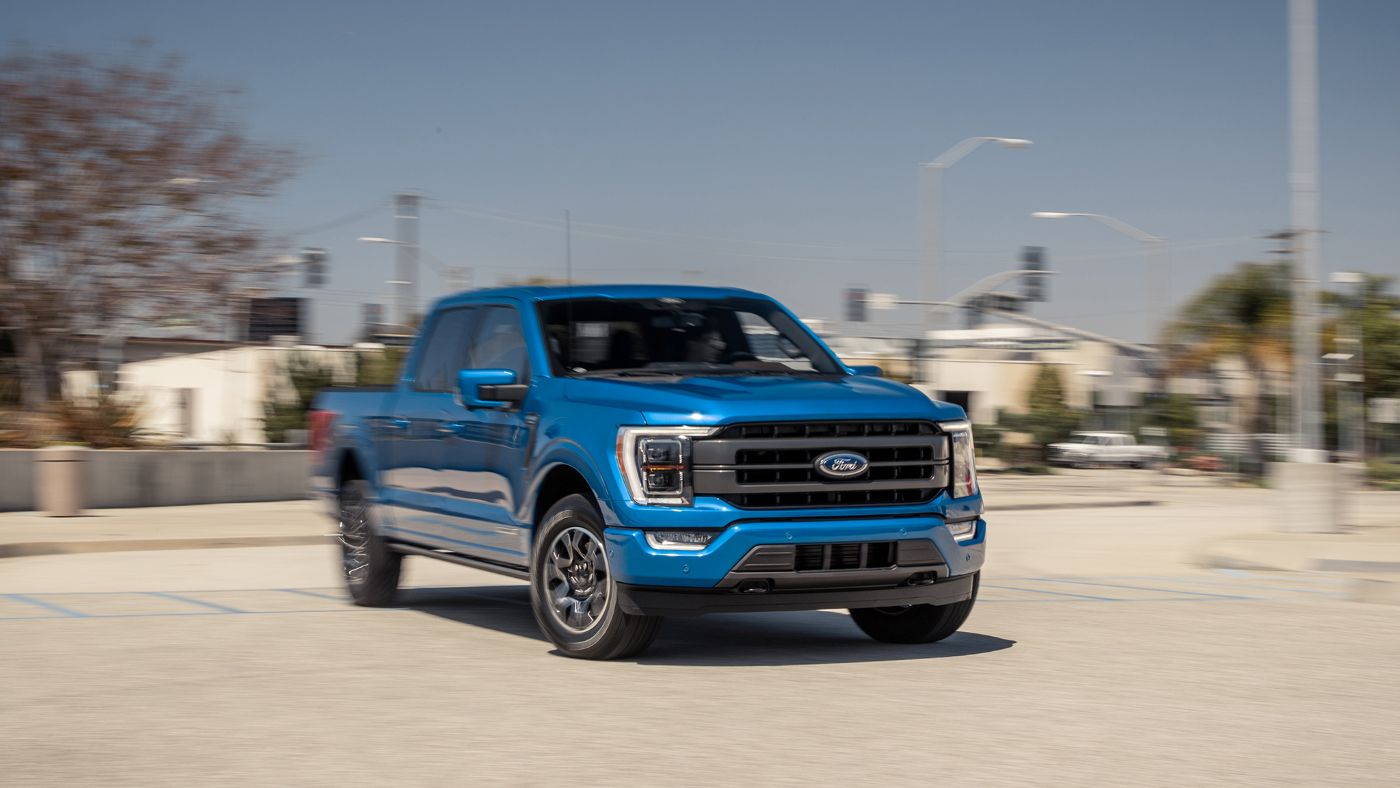
1. Ford F-150 (2015–2020)
The Ford F-150 has long set benchmarks in durability, tech integration, and practicality, but one of its most understated strengths is the reliability of its Tire Pressure Monitoring System. From 2015 through 2020, Ford’s commitment to refining electronic subsystems—especially those tied to safety—became evident. The TPMS installed in these models benefited from a balance of precision and restraint.
Drivers rarely reported false positives, which is a testament to Ford’s choice of sensor hardware and intelligent calibration. Unlike less-refined systems that panic with every 1–2 psi drop (especially during cold mornings), the F-150’s TPMS issues alerts only when pressure changes are significant enough to pose a safety risk.
This enhances the system’s credibility in the eyes of drivers—alerts mean something, and that matters on long road trips or work-heavy days. One strength of the F-150 TPMS is its consistency across driving environments.
Whether you’re hauling a trailer through humid Southern states or navigating rocky terrain in the Southwest, the sensors perform with minimal interference. This can be attributed to their built-in temperature compensation and vibration-resistant mounting points. Ford used high-end sensor units designed to last nearly a decade under typical usage.
Furthermore, the sensors sync rapidly with the central computer, ensuring real-time data without lag. This tight communication loop reduces false alarms and makes the system more trustworthy in both daily and extreme conditions. It also contributes to faster diagnostics when an actual tire issue does occur.
Ford also engineered the TPMS system in the F-150 to work harmoniously with its Sync infotainment and diagnostic platforms. Owners receive precise tire-by-tire pressure readings via the dash, allowing them to spot slow leaks before they become safety hazards.
The system allows for manual relearn procedures after tire rotations, without the need for specialized tools. That self-sufficiency appeals to owners who manage their own maintenance or operate fleets.
Even aftermarket wheels rarely interfere with TPMS function, a benefit of Ford’s widespread sensor compatibility and straightforward reprogramming instructions. It’s small touches like this that add up to a low-failure experience.
Lastly, Ford’s dealer support network plays an essential role in maintaining TPMS reliability over time. With nearly every dealership equipped to handle sensor replacements and recalibrations quickly, even the rare TPMS hiccup gets resolved without prolonged downtime.
Owners report that the sensors themselves rarely need premature replacement, and when they do, parts are easy to source and affordable compared to more proprietary systems. All of these factors together make the F-150 one of the most dependable full-size pickups when it comes to TPMS stability—a rare blend of tech resilience, ease of service, and thoughtful integration.
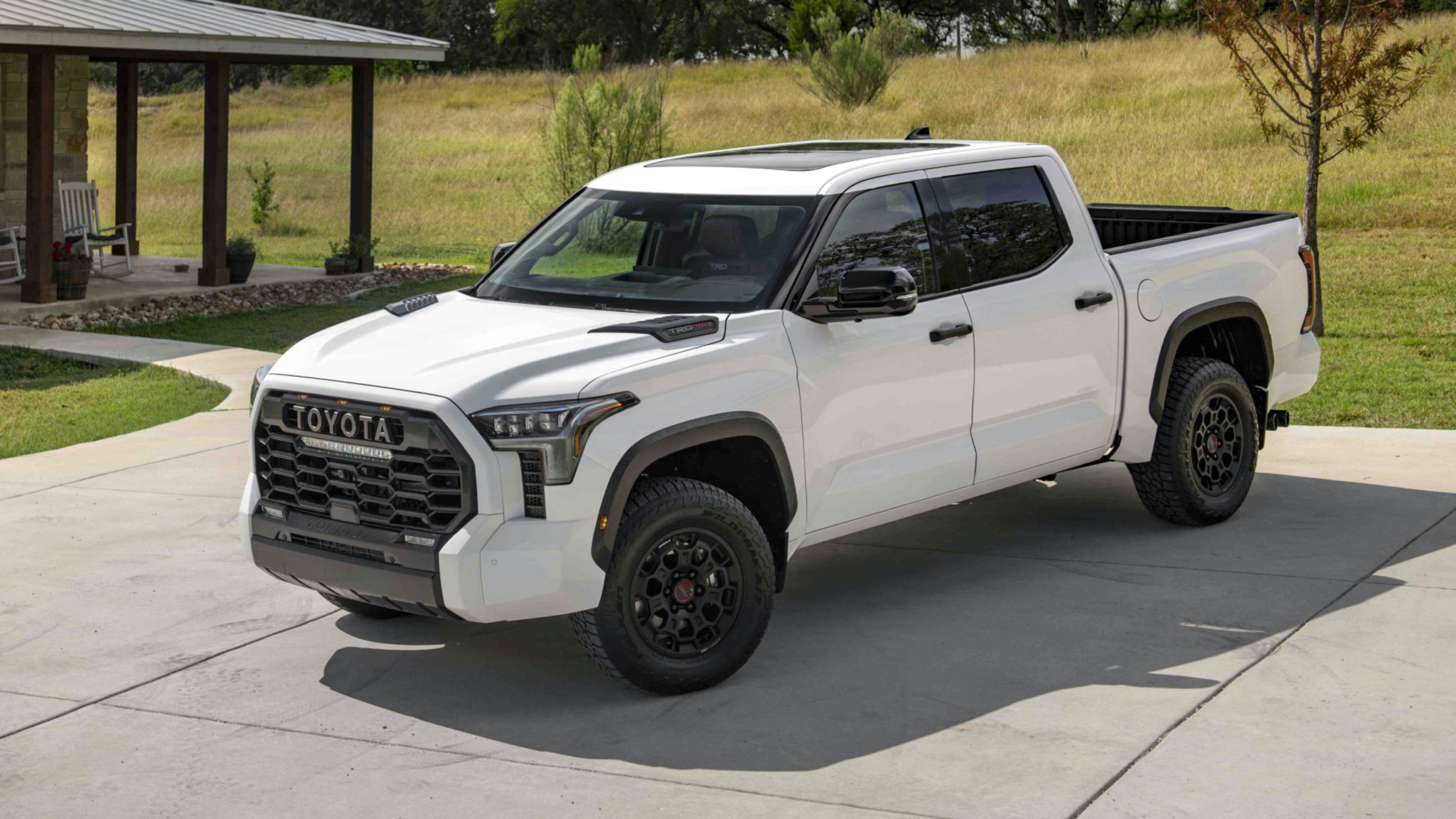
2. Toyota Tundra (2014–2019)
The Toyota Tundra, a truck engineered for rugged reliability and simplicity, demonstrates one of the most durable TPMS systems in the light-duty truck segment. From 2014 to 2019, Toyota refined its already well-regarded TPMS technology to minimize failure rates and reduce false alerts.
The Tundra benefits from Toyota’s global strategy of prioritizing component longevity over bleeding-edge innovation. The sensors used in these models are less prone to communication dropouts or temperature-induced fluctuations, which gives the system a quiet but dependable performance edge.
Drivers rarely encounter random alerts or confusing reset protocols—everything works as it should, even under variable conditions. A major advantage of the Tundra’s TPMS is how it handles modifications.
Many truck owners enjoy customizing their vehicles with larger wheels, off-road tires, or load-specific modifications. These changes can confuse or disable lesser TPMS setups. However, the Tundra’s system accommodates such changes better than many rivals.
Its sensor calibration tolerates a broader PSI range without triggering unnecessary alerts. Furthermore, Toyota’s sensor registration process is relatively DIY-friendly. Owners can perform resets and sensor pairing without proprietary dealership software, saving time and maintenance costs.
Durability is another defining trait. Toyota sources many of its sensors from Japanese OEMs known for superior electronics testing. These sensors are built to resist high heat, extreme cold, and water intrusion—common conditions for a working truck. Many Tundra owners report sensors functioning perfectly well a full decade into ownership.
The TPMS battery life is notably long-lasting, and sensors don’t suffer frequent disconnects, even during extended idle periods. This makes the Tundra ideal for infrequent use or rural applications where downtime and repeat servicing would be a major inconvenience.
Perhaps most importantly, Toyota’s TPMS avoids being overly sensitive. Many systems today err on the side of hyper-vigilance, issuing warnings for minimal PSI drops that don’t impact handling or safety. The Tundra instead alerts when tire pressure genuinely compromises safety, making alerts rarer but more trustworthy.
In winter climates or mountainous terrain—where pressure fluctuations are common—this calibration spares drivers the nuisance of warning lights they’ve learned to ignore in other vehicles. This blend of resilience, ease of use, and consistent long-term function places the Tundra’s TPMS among the most robust in the segment.
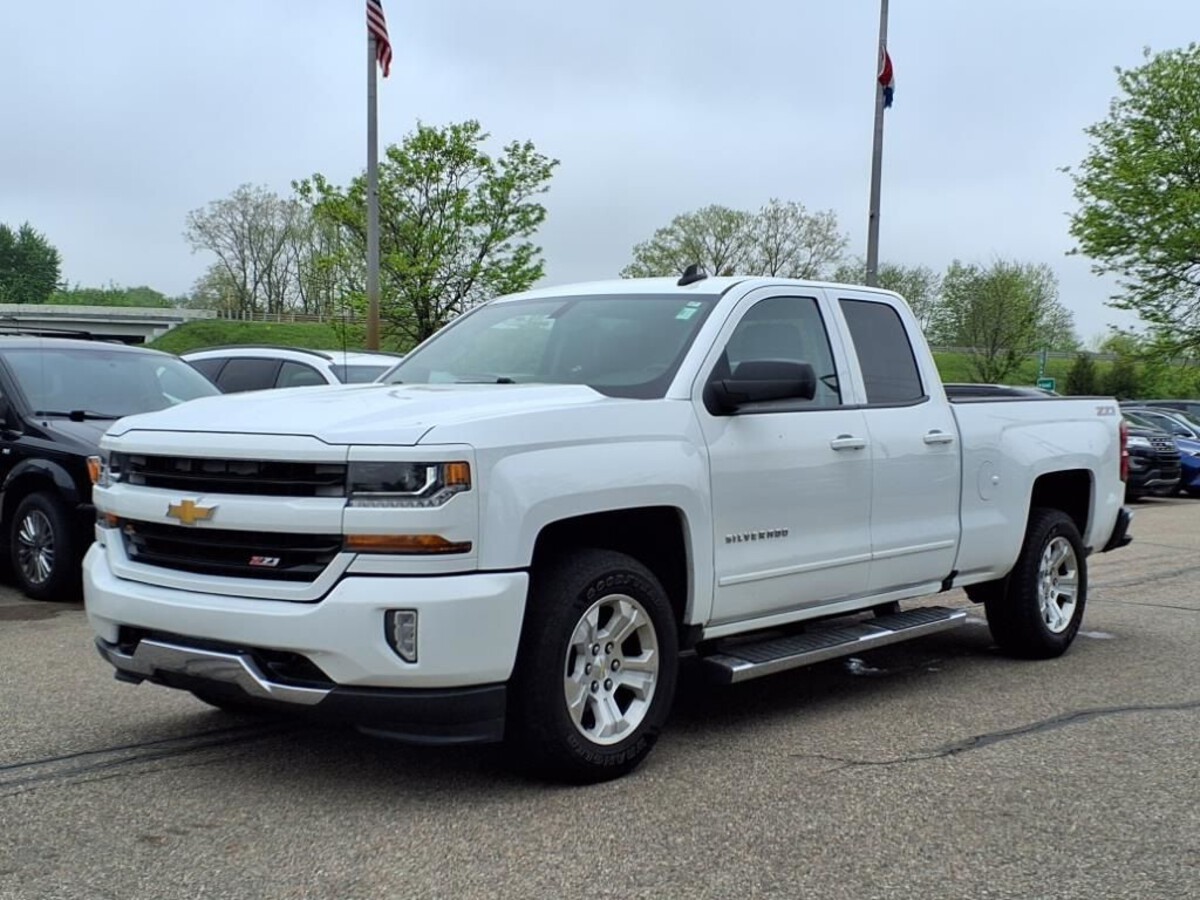
3. Chevrolet Silverado 1500 (2016–2021)
Chevrolet’s Silverado 1500, particularly between 2016 and 2021, represents a balanced evolution in utility, comfort, and electronic precision. Among its many strong points is a relatively trouble-free Tire Pressure Monitoring System.
GM’s approach to electronic architecture during this generation emphasized unification across models, meaning systems like TPMS benefited from shared R&D and software frameworks.
The result is a sensor and alert logic package that avoids the pitfalls of either excessive simplicity or aggressive over-engineering. Silverado owners typically praise the TPMS for its restraint—alerts come when needed, but not every time the temperature drops five degrees.
One unique strength of the Silverado’s TPMS system is its adaptive alert behavior. Unlike rigid systems that assume every PSI drop is an emergency, the Silverado accounts for load weight and vehicle use. When towing, it adjusts its thresholds upward, while still maintaining safety margins.
This logic minimizes alert frequency without compromising safety. For working professionals who regularly shift between loaded and unloaded conditions, this makes the system less annoying and more reliable. Fewer false warnings mean drivers take alerts more seriously and resolve them faster.
Ease of maintenance is another Silverado advantage. When sensors eventually fail (often a result of battery death after many years), they’re among the cheapest to replace and easiest to program. GM designed its TPMS to be friendly with a wide range of tire scan tools, and even basic code readers can reset TPMS modules on these trucks.
This reduces service costs and appeals to both small fleet managers and DIY owners. Additionally, the system is rarely confused by wheel swaps or tire upgrades, a common complaint in competitor vehicles.
Finally, the Silverado’s TPMS is built to handle diverse driving patterns. It functions just as reliably on a daily driver as it does on a rural hunting truck that sits idle for months at a time. The sensors retain their connection and do not require reprogramming after storage or long trips.
The interface on the dashboard is simple and clear, with PSI readings for each tire and no cryptic warning codes. Combined with the system’s relatively low failure rate and minimal complaints across truck forums and fleet reviews, this makes the Silverado 1500 a strong contender for the most user-friendly TPMS system in its class.
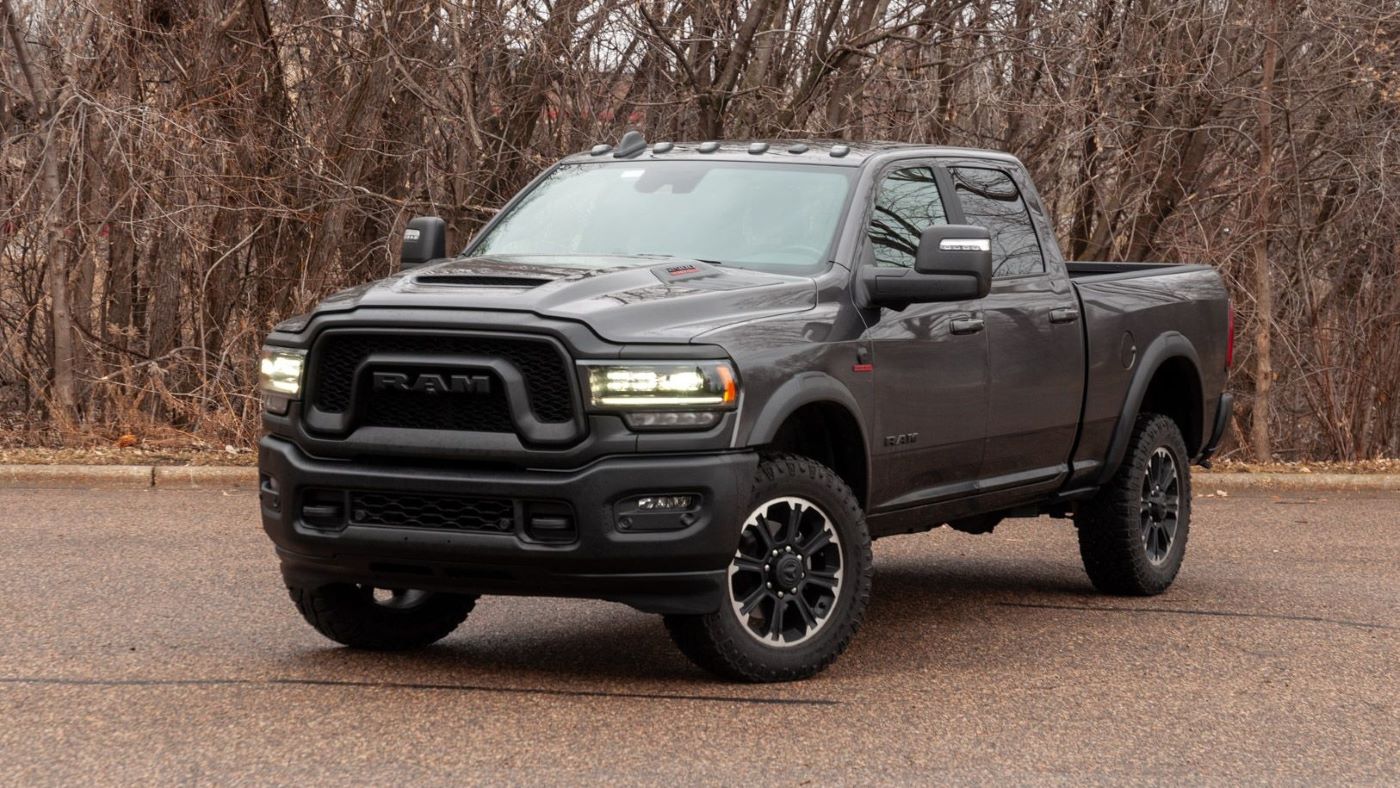
4. Ram 2500 HD (2015–2020)
Heavy-duty trucks require heavy-duty systems, and the Ram 2500 HD from 2015 to 2020 delivers just that in the realm of TPMS reliability. Unlike lighter-duty vehicles, these trucks operate under intense pressure—literally and figuratively—with loads that can exceed standard PSI thresholds and cause havoc in weaker systems.
Ram engineers responded by integrating a durable, multi-sensor TPMS that was custom-tuned for the truck’s weight class. This system doesn’t just survive high temperatures and pressures; it thrives in them. The sensors are physically larger and more heat-resistant, designed to endure under towing and long-distance hauling.
One standout aspect of the Ram’s TPMS is its trailer integration capability. Ram was one of the first in its segment to offer optional trailer tire monitoring as part of its TPMS package. This secondary monitoring allows drivers to view PSI levels in all attached trailer tires, not just the main vehicle.
For contractors and farmers hauling heavy equipment or livestock, this added visibility is a major safety benefit. Unlike third-party trailer sensors, Ram’s system integrates seamlessly with the dash, providing one coherent interface without aftermarket parts or mobile apps.
Reliability extends to customization as well. The Ram 2500 HD’s TPMS can be recalibrated for a range of tire sizes, including large all-terrain and commercial-grade options. Many competitors struggle with TPMS errors once custom wheels or off-road tires are installed, but Ram’s system is designed with these upgrades in mind.
Owners can manually reset sensors after tire rotations or swaps with a straightforward relearn procedure. This self-service option cuts down on dealer visits and keeps costs manageable—an underrated but crucial factor for business operators and rural owners.
Another bonus is how well the system performs in extreme weather. Cold weather doesn’t trigger premature alerts, and high summer temperatures don’t cause signal dropouts. The robust sensor battery design ensures long life even in punishing heat, and vibration shielding built into the wheel well mounting minimizes wear.
Across ownership forums and repair databases, complaints of TPMS failure in Ram 2500 HDs are infrequent and usually tied to user error rather than system flaws. For anyone needing a no-nonsense workhorse with TPMS you can trust, the Ram 2500 HD is a formidable choice.
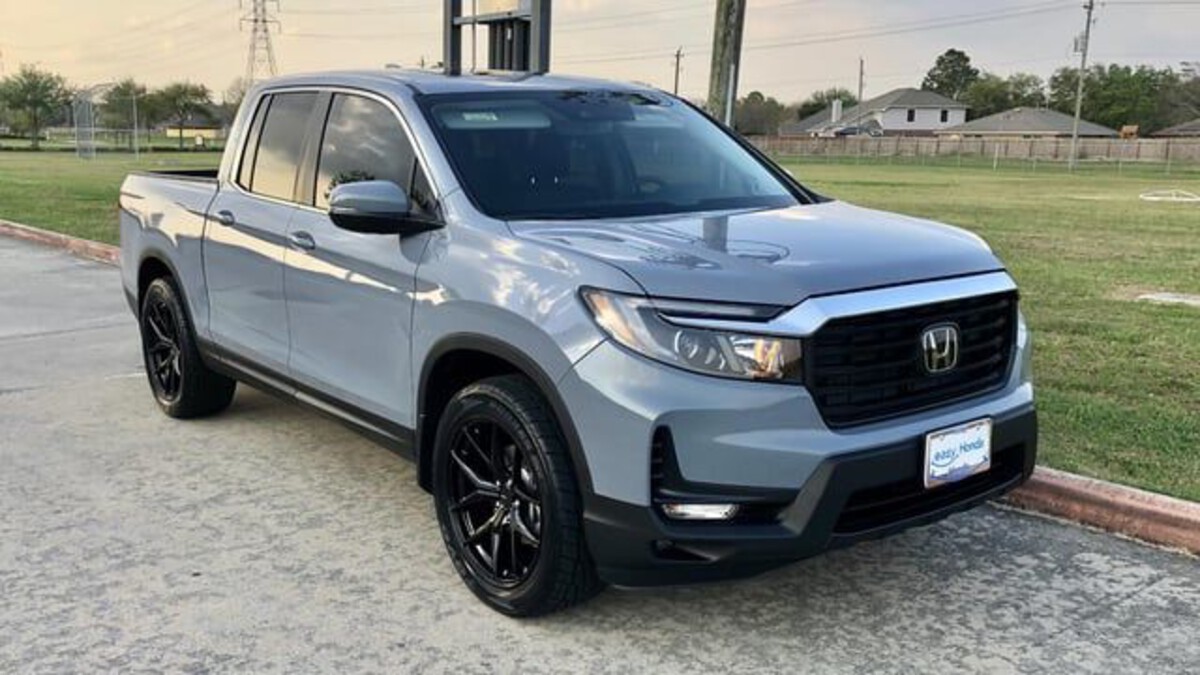
5. Honda Ridgeline (2017–2021)
Though not always grouped with full-size pickups, the Honda Ridgeline offers one of the most consistently reliable TPMS systems in the midsize truck segment—and often outperforms larger rivals in sensor reliability. The 2017–2021 Ridgeline generation stands out due to Honda’s integrated approach to safety tech and electronics.
While the truck is unibody rather than body-on-frame, it still handles light towing, road trips, and rugged terrain well, all while delivering almost zero TPMS drama. Owners report extremely low rates of false alerts or sensor dropouts, a reflection of both high-quality sensors and a smart control algorithm.
Part of the Ridgeline’s advantage lies in its sensor placement and software logic. The sensors operate within a pressure tolerance that allows minor fluctuations without triggering alerts—particularly useful in climates where tires can shift PSI throughout the day.
This approach keeps drivers from becoming desensitized to alerts and encourages them to take warnings seriously. Unlike some competitors that spam the driver with alerts over small changes, the Ridgeline system only activates when a legitimate discrepancy occurs. This is especially appreciated in long-distance or daily commuter scenarios.
Honda also designed the system with simplicity in mind. After a tire rotation, seasonal swap, or pressure adjustment, the reset process is seamless and often automatic. In many cases, the TPMS auto-learns new positions without needing dealership intervention.
This is a huge advantage for DIY users or those who regularly adjust tire setups. The lack of proprietary hardware or confusing menus makes the system accessible and user-friendly, and sensors are widely available and compatible with most aftermarket wheels.
Finally, the Ridgeline TPMS performs admirably even when the truck is pushed into nontraditional use—such as light off-roading or hauling camping gear. Despite its crossover-like appearance, it holds up under moderate stress and never loses TPMS integrity.
Honda’s reputation for electrical system durability shines through, with the Ridgeline’s TPMS offering years of quiet, dependable service. For buyers who want low-maintenance, accurate tire monitoring in a refined package, this truck offers one of the most headache-free experiences on the market.
5 with frequent alerts
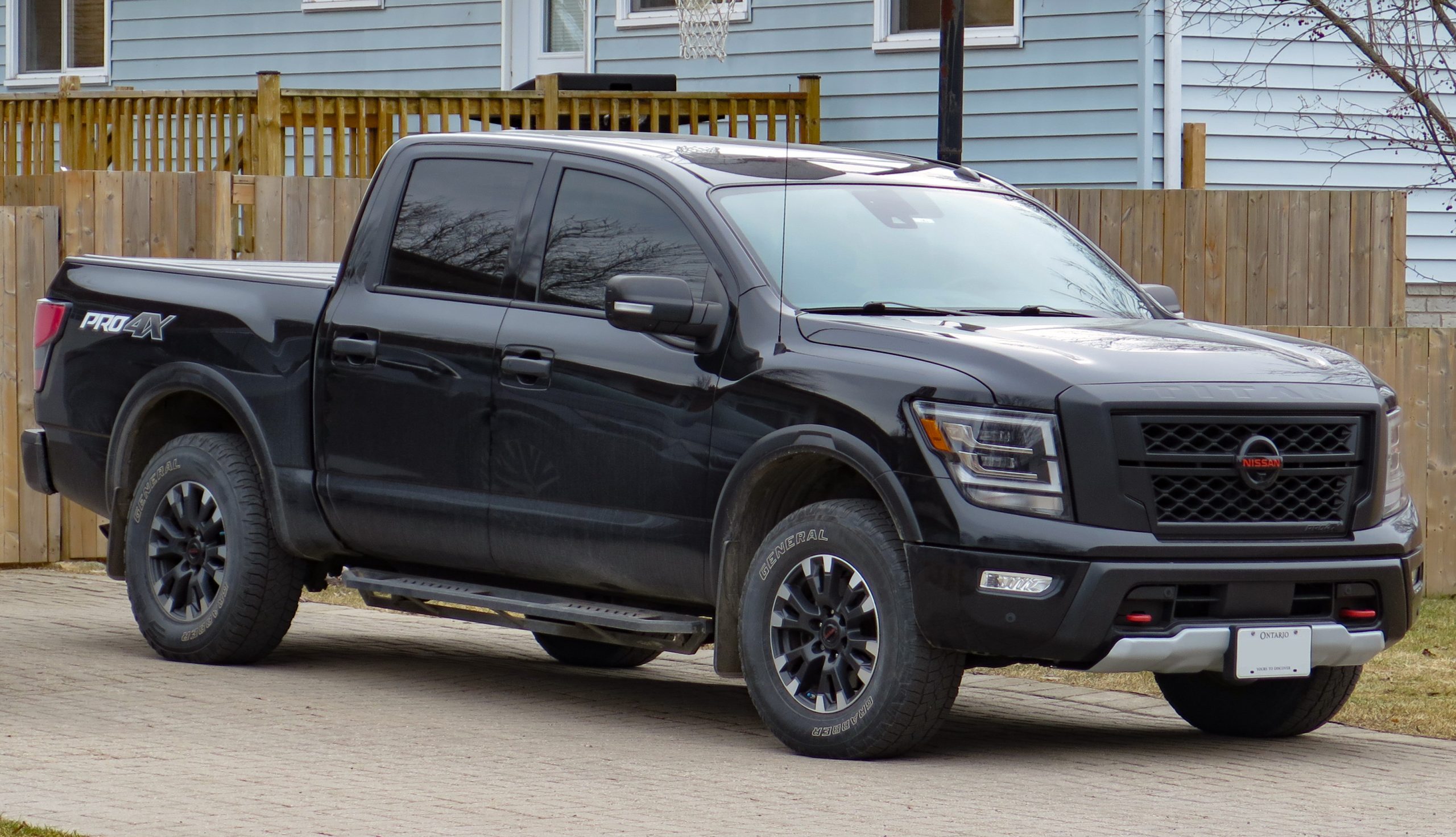
1. Nissan Titan (2016–2020)
The Nissan Titan, while respected for its capable V8 and solid towing capacity, has earned a somewhat unfortunate reputation for a finicky Tire Pressure Monitoring System, especially in models built between 2016 and 2020. One of the most common complaints among Titan owners is an over-sensitive TPMS that triggers alerts even with minor air pressure changes.
This is especially frustrating in cold weather, where a routine overnight pressure dip leads to an alert light on the dash. What makes this more problematic is the Titan’s lack of flexibility — the system gives you little ability to recalibrate or suppress alerts unless you visit a dealership.
The sensitivity itself might be tolerable if the system were more intuitive, but Titan’s TPMS lacks individual tire pressure displays in many trims. This means when the alert goes off, the driver isn’t told which tire is the issue — a significant inconvenience.
You have to manually check all four (or five) tires with a gauge to find the culprit, even if the variation is minimal. In a time when many trucks offer individual PSI readouts, this lack of precision makes the alert system feel more like a nuisance than a helpful tool.
Further complicating matters is the fact that Titan TPMS sensors often lose signal prematurely. Owners have reported sensor batteries dying earlier than the expected 7–10 years, sometimes as early as 3–5 years. Worse, sensor communication issues — such as dropouts between wheel and ECU — can occur randomly, even while driving.
This results in flashing warnings that disappear once the truck is restarted, creating a false sense of urgency followed by complete silence. Such inconsistencies erode driver trust and reduce the system’s long-term utility.
Another thorn in the side of Titan owners is the poor compatibility with aftermarket wheels and tires. Upgrading to off-road setups frequently leads to persistent warning lights, and Nissan’s TPMS isn’t known for easy reprogramming.
It often requires a proprietary scan tool, meaning a trip to the dealer is necessary for something that many other trucks allow owners to do themselves. For drivers who live in areas with large temperature swings or who customize their trucks often, the Titan’s TPMS becomes more of a hassle than a safety net, which undermines its core purpose.
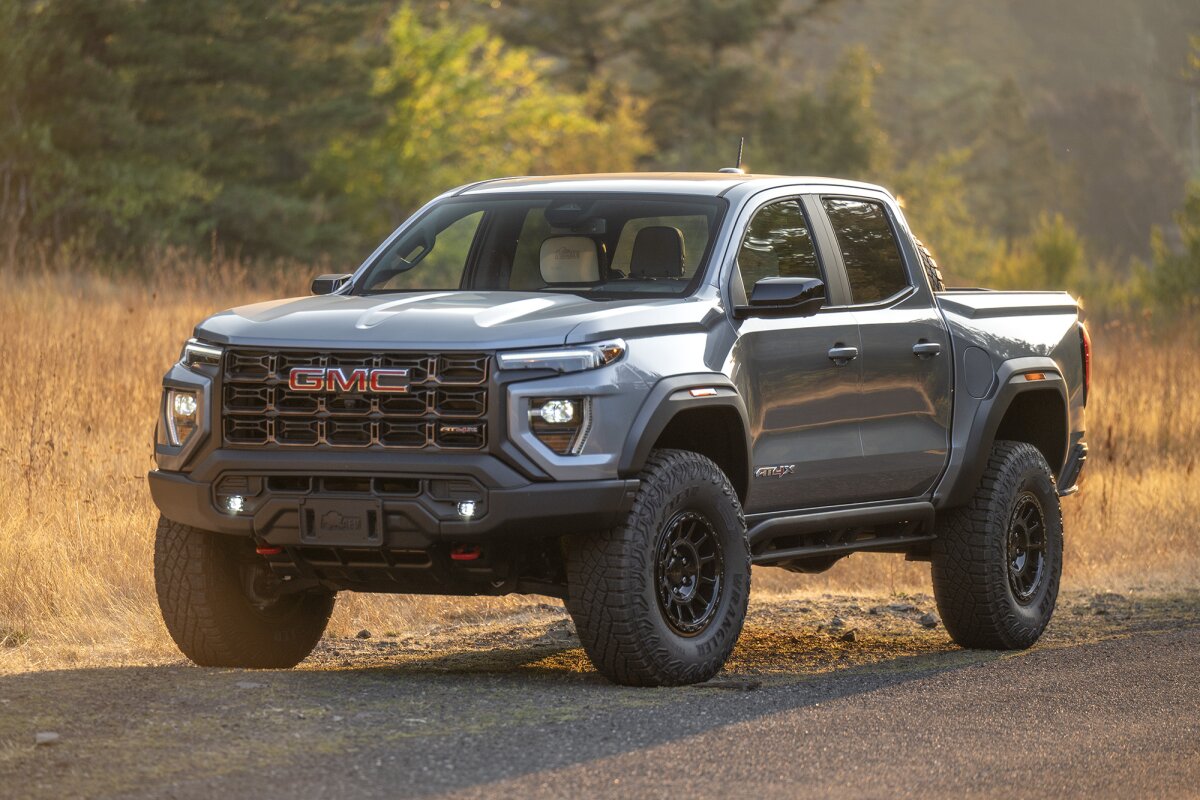
2. GMC Canyon (2015–2019)
The GMC Canyon is praised for its maneuverability, diesel engine option, and mid-size practicality, but TPMS reliability is not among its strong suits. From 2015 to 2019, owners routinely reported persistent TPMS alerts that often stemmed from the system’s high sensitivity to air pressure deviations. A 1–2 psi drop — well within the safe range — is sometimes enough to light up the dashboard warning.
For drivers in northern climates or high-altitude areas, this means starting cold mornings with an unwelcome alert that usually vanishes by midday. The false alert frequency causes many owners to simply ignore the system entirely, which defeats its original safety purpose.
The Canyon also suffers from irregular sensor syncing. Many users have encountered scenarios where one or more tire sensors fail to register with the truck after tire rotations or seasonal swaps, leading to a “Service Tire Monitor System” warning that won’t clear until reset by a GM-specific scan tool.
Unlike full-size GM trucks like the Silverado — which are more forgiving and easier to program — the Canyon lacks built-in reset features in most trims. This makes TPMS maintenance more time-consuming and expensive, especially for DIY users or small fleet operators.
Additionally, many Canyons came equipped with low-cost OEM sensors that exhibit premature failure rates. Reports from owners point to sensor batteries dying far earlier than expected, often within 4–5 years.
Once a sensor begins to fail, it may send erratic signals or intermittently disconnect from the system, resulting in flickering or intermittent alerts. This not only causes confusion but also creates an environment where true pressure issues might be overlooked because drivers become desensitized to the constant chimes and warning lights.
One more challenge with the Canyon is how it behaves after off-road driving or extended highway travel. In some cases, sustained high-speed or off-road vibrations can cause the system to lose contact with one or more tire sensors. Instead of recalibrating automatically, the TPMS then throws a persistent error that can take multiple ignition cycles to clear.
For a vehicle marketed toward adventurers and worksite versatility, the TPMS system’s fragility and lack of adaptability detract from the truck’s practical value. It’s a case of a good truck being let down by a poorly executed subsystem.
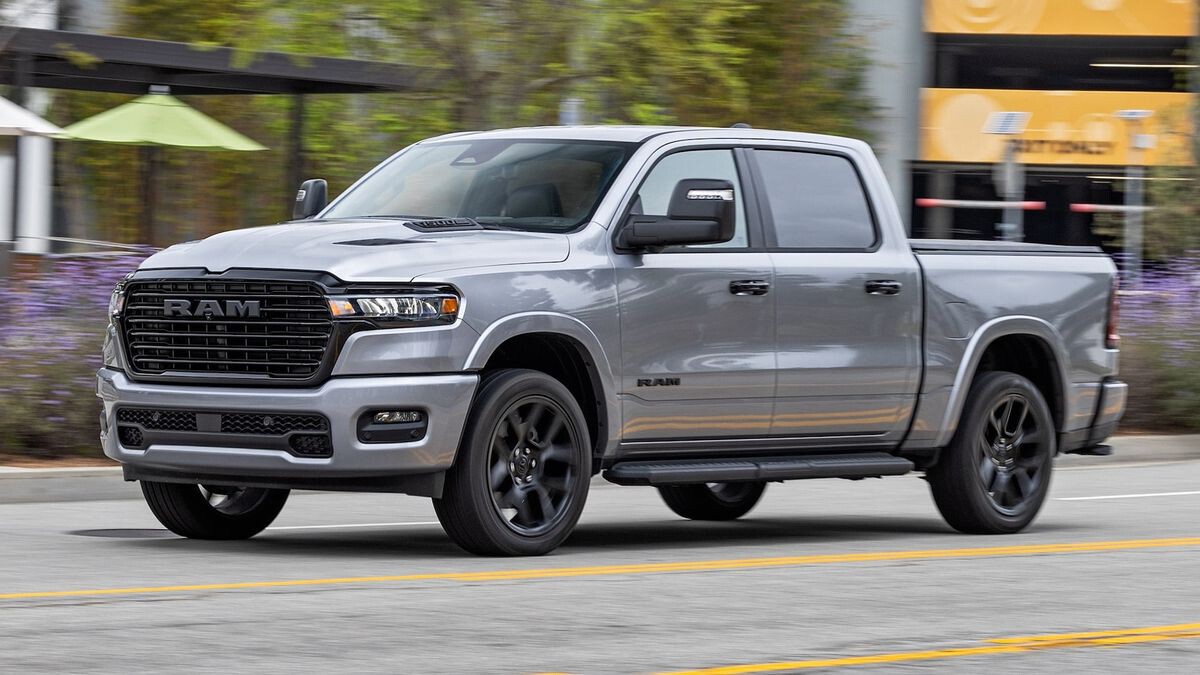
3. Ram 1500 (2014–2018)
The Ram 1500, while widely admired for its ride quality and stylish interior, has seen recurring complaints related to its TPMS system — especially in the 2014–2018 models. This generation’s system has been noted for either excessive sensitivity or total sensor failure with little in-between.
Many drivers report the system triggering alerts during moderate weather shifts, despite pressure changes being within the tolerable range. This makes the system feel unnecessarily paranoid, particularly in regions with fluctuating climates or drivers who frequently travel across altitude gradients.
A major downside of the Ram 1500’s TPMS is the limited driver feedback provided through the dashboard interface. While later models began including individual tire pressure readings, many trims from this period simply flash a general warning light with no context.
Drivers must manually inspect each tire with a pressure gauge to determine the problem — a task that becomes tiresome when alerts happen frequently and are often caused by relatively benign pressure shifts. This lack of specificity means the TPMS becomes more of a distraction than a diagnostic tool.
Another weakness lies in how the system handles tire modifications. Ram trucks are a popular platform for customization, with owners frequently upgrading to larger wheels or beefier off-road tires. Unfortunately, the 2014–2018 TPMS systems struggle with aftermarket setups.
Custom wheels often lead to persistent alerts unless sensors are reprogrammed by the dealership, and even then, recalibration isn’t always successful on the first attempt. This rigidity makes life difficult for enthusiasts and professionals alike, who may need to adapt their tire configurations seasonally or by project.
Additionally, the sensors themselves have a mixed record in terms of hardware reliability. While not as failure-prone as those in the Canyon or Titan, Ram 1500 sensors from this period are known to suffer from premature battery drain. Once a sensor starts to fail, it can cause flickering alerts or throw off the entire system, sometimes requiring all four sensors to be replaced just to clear the dashboard warning.
Considering the cost and time involved, especially if dealership service is required, it’s no surprise that many owners become frustrated with what should be a simple safety system. Overall, while the Ram 1500 is a solid truck, its TPMS from this era fails to deliver consistent and user-friendly performance.
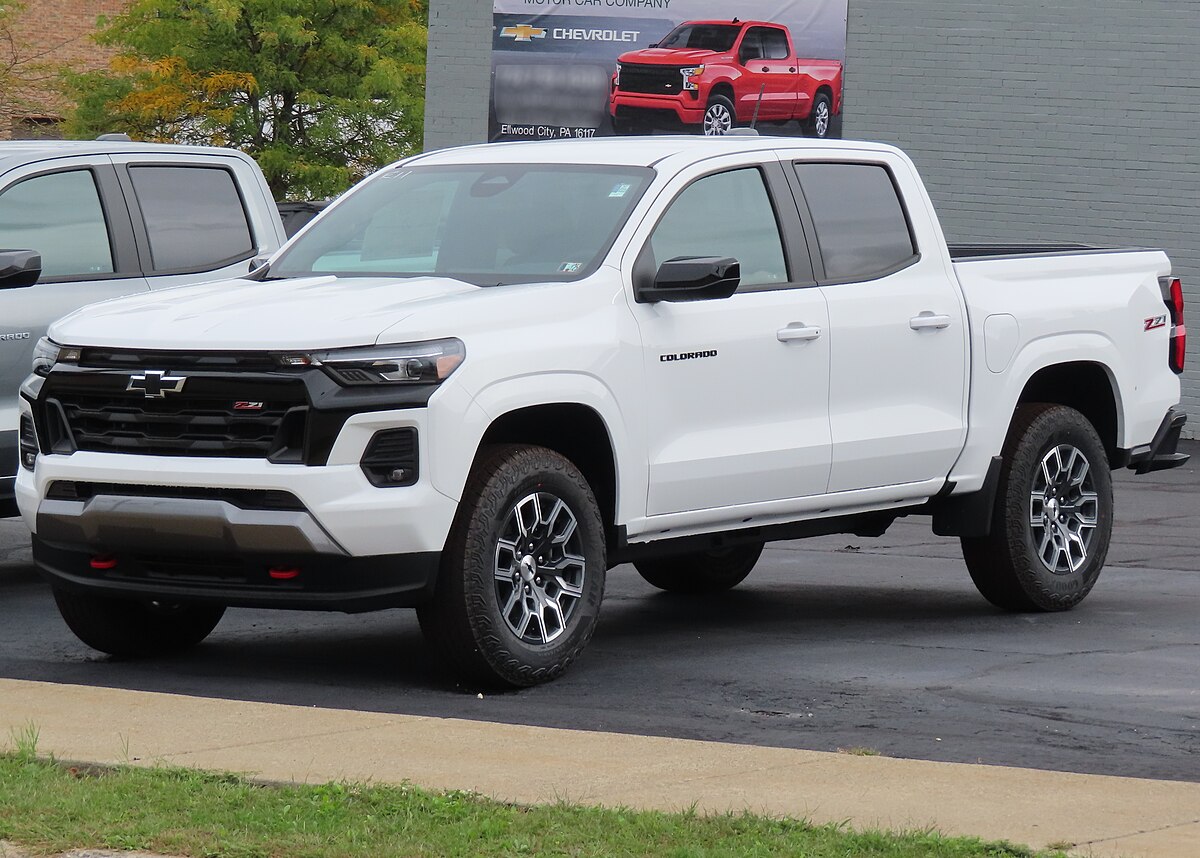
4. Chevrolet Colorado (2015–2019)
Closely related to the GMC Canyon, the Chevrolet Colorado from 2015 to 2019 inherits many of its sibling’s TPMS woes. Despite being marketed as a versatile, go-anywhere truck for both urban and adventurous users, the TPMS system in these models proves to be one of its most consistent pain points.
Frequent false alerts, sensor errors, and limited reset capabilities combine to make the system more of a maintenance burden than a helpful safeguard. Users often find themselves wrestling with warning lights that don’t correspond to any actual tire pressure issues.
Like the Canyon, the Colorado’s TPMS is hypersensitive to small changes in PSI. In practical terms, this means the truck often triggers a warning light during normal overnight pressure drops, even when all tires are still within the manufacturer’s safe range.
What makes matters worse is that the alert system doesn’t always clear itself when tire pressure returns to normal. Drivers frequently report having to manually inflate and deflate tires just to reset the system, which is frustrating and counterproductive.
One consistent issue across owner reports is sensor miscommunication. Whether due to battery degradation or interference from road conditions, sensors sometimes drop offline temporarily, especially at high speeds or in cold weather. When this happens, the system might flash a “Service TPMS” light that remains until reset by a technician. Unlike higher-end GM trucks, the Colorado lacks robust self-learning features or user-accessible reset commands, making it disproportionately inconvenient to maintain.
A final problem comes from the truck’s incompatibility with aftermarket setups. Many Colorado owners switch to beefier all-terrain tires or new rims — especially on the Z71 and ZR2 trims — but find that TPMS sensors are either incompatible or fail to register.
When sensors do work, they often require dealership reprogramming, which isn’t ideal for users who want the freedom to swap tire sets seasonally. In the end, the Colorado’s TPMS system feels more like an afterthought, limiting the truck’s overall utility and undermining driver confidence in one of its most critical safety features.

5. Ford Ranger (2019–2022)
The return of the Ford Ranger to the North American market in 2019 was met with enthusiasm, but not without hiccups — especially in terms of TPMS performance. While the Ranger is generally a reliable, efficient midsize pickup, its TPMS system has drawn criticism for excessive sensitivity and glitchy behavior.
One of the most common complaints from owners is the frequency of alerts during seasonal temperature drops. While all systems are affected by the gas law, the Ranger seems unusually quick to flash its warning light for changes that are minor and temporary.
Compounding the issue is the Ranger’s somewhat limited diagnostic display. In lower trims, especially, the TPMS system often only shows a general warning light rather than detailed tire-by-tire pressure information. This forces drivers to manually check each tire with a gauge whenever the warning appears, even if the pressure variations are trivial or temporary. Without specific feedback, the TPMS feels less like a helpful safety assistant and more like an annoying interrupt that requires unnecessary time and effort to resolve.
Furthermore, the Ranger’s TPMS can be sensitive to wheel and tire changes that are common among midsize truck owners. Many Rangers are modified with aftermarket wheels, all-terrain tires, or even mild lift kits, but the TPMS system struggles to adapt smoothly to these upgrades.
Owners report frequent “sensor missing” or “low pressure” alerts after installing aftermarket tires, even when pressures are within recommended ranges. This is largely due to Ford’s use of sensors with limited compatibility and a recalibration process that requires specialized diagnostic equipment or dealer intervention, limiting owner autonomy and increasing maintenance costs.
The hardware itself also presents some reliability concerns. While not catastrophic, sensor battery life in the Ranger TPMS often falls short of the typical 7–10 year expectancy, with failures occurring closer to the 4–6 year mark.
When sensors fail, the truck will repeatedly alert the driver until the defective sensor is replaced and the system is reset, which can be frustrating given the associated parts and labor costs. Intermittent signal dropouts have also been reported, especially in cold or wet conditions, causing temporary but confusing “TPMS malfunction” warnings that clear only after several ignition cycles.
Finally, Ford’s dealer network, while extensive, can sometimes be slow to address TPMS-related service requests due to the system’s complexity and the diagnostic tools required. Unlike some competitors that have adopted more user-friendly reset procedures and sensor programming options, the Ranger’s TPMS remains somewhat locked behind dealer service walls.
This results in avoidable downtime and inconvenience for owners who expect quick fixes for what should be a straightforward safety feature. Collectively, these factors make the Ranger’s TPMS one of the more frequently complained-about systems in the midsize truck segment, contributing to driver frustration and occasional distrust of the alerts it provides.
Also Read: 5 EVs With the Best Torque Delivery and 5 With Lag
The performance of a truck’s Tire Pressure Monitoring System is a crucial yet often overlooked element of vehicle safety and reliability. This article’s comprehensive look at the five trucks with the lowest average TPMS failure rates alongside the five known for frequent alerts reveals a stark contrast in engineering approaches, sensor quality, and user experience.
Vehicles like the Ford F-150, Toyota Tundra, Chevrolet Silverado, Ram 2500 HD, and Honda Ridgeline exemplify how thoughtful system design, durable hardware, and flexible software can deliver dependable, low-maintenance tire pressure monitoring.
Their systems are calibrated to balance sensitivity and practicality, reducing unnecessary alerts while ensuring drivers are promptly warned of real issues. These trucks demonstrate that when TPMS technology is done right, it becomes an invisible but powerful safety net that drivers can rely on for years of trouble-free use.
In contrast, trucks such as the Nissan Titan, GMC Canyon, Ram 1500, Chevrolet Colorado, and Ford Ranger highlight the frustrations that come with less refined TPMS implementations. Overly sensitive sensors, limited driver feedback, premature battery failures, and complex reset procedures often cause these systems to generate frequent, sometimes confusing warnings.
This not only inconveniences drivers but also risks desensitizing them to alerts, potentially undermining safety. Moreover, difficulties with aftermarket wheel compatibility and dealership-dependent maintenance further erode the user experience, particularly for owners who regularly customize their vehicles or drive in extreme climates.
One of the key takeaways from this comparison is that the reliability of TPMS is not solely about the sensors themselves but also the broader integration of hardware, software, and support infrastructure. Trucks with successful TPMS systems tend to incorporate sensors designed for durability under harsh conditions, adaptive alert algorithms that minimize false alarms, and accessible reset or recalibration options.
Meanwhile, problematic systems often reflect a combination of rushed implementations, cost-cutting on sensor components, or lack of user-friendly diagnostics, all of which contribute to frequent failures and driver dissatisfaction.
For truck owners and fleet managers, understanding these differences is more than an academic exercise. It directly affects vehicle uptime, maintenance costs, and driver safety. Choosing trucks known for low TPMS failure rates can reduce roadside emergencies and service visits, while recognizing problematic models can inform preventative maintenance strategies or push manufacturers toward improvements.
Furthermore, owners of trucks prone to frequent alerts can benefit from proactive measures such as regular sensor checks, using compatible tire and wheel setups, and seeking professional recalibration after modifications.
Looking forward, the evolution of TPMS technology promises to address many of these challenges. Advances in sensor battery life, wireless communication protocols, and integration with vehicle telematics systems are already underway. Future iterations may offer self-healing networks that automatically recalibrate, provide real-time alerts via smartphones, and even predict tire wear or damage before pressure drops occur.
Until such technologies become ubiquitous, the insights provided here can help buyers and users make the most of today’s systems and avoid common pitfalls. In summary, the tire pressure monitoring system, though often hidden from view, plays an essential role in the safety and performance of modern trucks.
By choosing vehicles with reliable TPMS and understanding the limitations of more problematic models, drivers can maintain safer road conditions, lower maintenance headaches, and enjoy greater peace of mind.
This article serves as a guide to navigating the complex landscape of TPMS technology—highlighting both the successes and failures so that truck owners can make informed, confident decisions for the road ahead.

